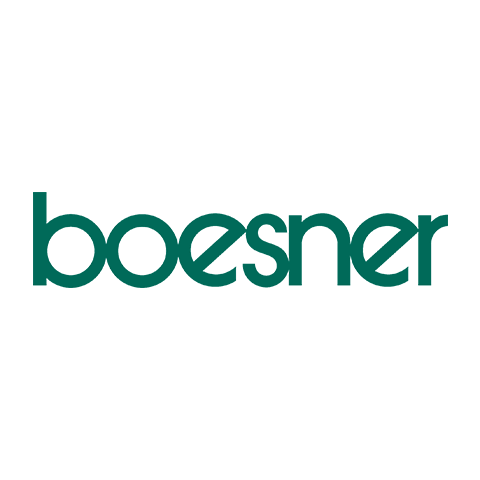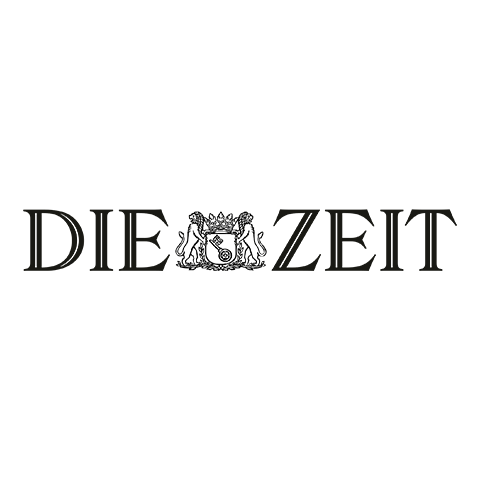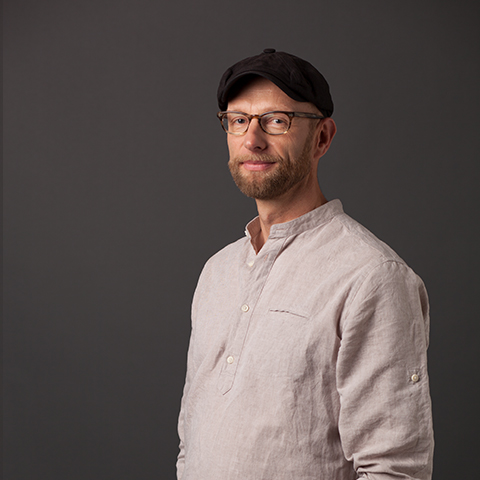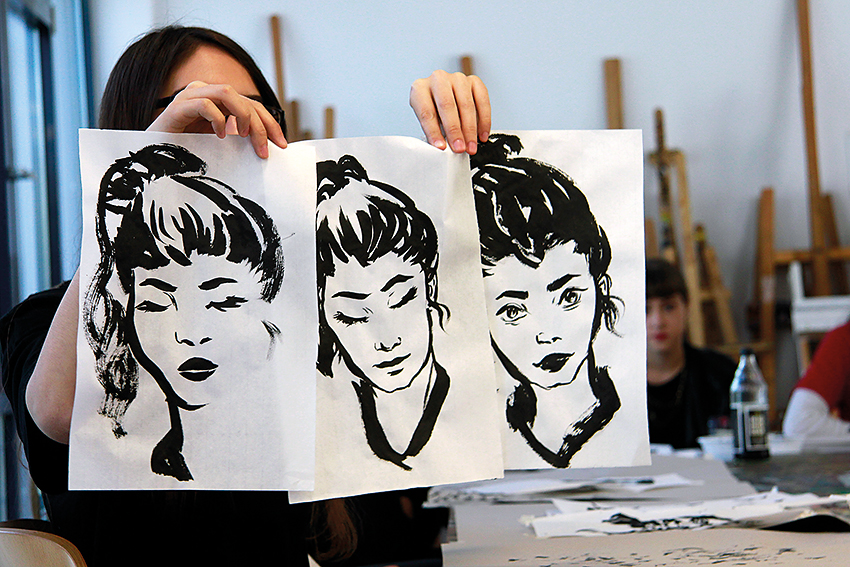
Bringing your vision to life
Curriculum | Illustration
Video by Cora Foitzik
Key facts BA Illustration
Check out our Location
Take a look at our Campus Berlin.
Immerse yourself in a city full of culture, diversity, and opportunities!
Check out our Virtual Campus Tour.
Admission Requirements
Here are some things you will require for your application at the UE:
- Completed admission form
- Transcript & language proficiency
- CV & Copy of passport
- A portfolio is required
- Admissions test (for non-EU applicants only).
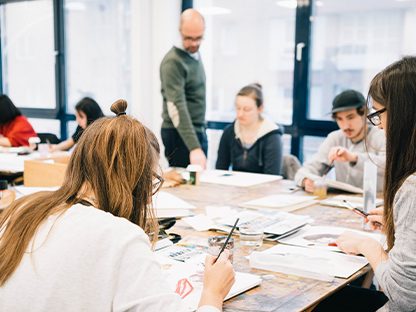
Semesters & Credits
- 6 semesters
- 180 ECTS (Credits)
- Teaching language: English
- Examination and Study Regulation
The programme starts in both the winter and summer terms.
Valeriya gives an insight into studying illustration and why she chose UE.
Fees
- EU applicants standard: € 744 monthly
- Non-EU applicants standard: € 12,700 yearly
Got questions about financing? Check out our fees!

About the Programme Illustration
In the Illustration programme at the University of Europe for Applied Sciences, you’ll explore drawing as both a technical foundation and a cultural communication tool. Guided by internationally recognised illustrators, you’ll develop a unique visual voice and experiment across a wide range of media – from analogue techniques to cutting-edge digital illustration.
What You’ll Learn
- Drawing, painting and printmaking – from fundamentals to advanced techniques
- Digital illustration and concept art for games, animation and media
- Storytelling through comics, visual narratives, and storyboarding
- Developing a personal illustration style and creative process
- Understanding illustration as a cultural, social and communicative tool
Possible salary in Germany after studying Illustration
If you work as an illustrator after studying illustration, your salary depends on various factors. For example, it makes a difference whether you have completed creative training or a special degree, whether you work as an employee or freelancer and, above all, in which industry you work and what experience you have gained so far.
In the advertising industry, salaries are generally higher than in the press and publishing industries. As a starting salary in a permanent position, you can expect to earn around 2,000 to 2,300 euros gross per month after graduation. According to StepStone, experienced illustrators in Germany earn an average of around 2,700 euros, while gehalt.de speaks of 3,000 euros per month.
Freelance illustrators receive an hourly wage of around 50-150 euros, depending on the industry and experience, although the Association of Illustrators (IO) recommends a wage of at least 60 euros per hour.

Your Creative Career Starts in Berlin – Become a Professional Illustrator in Germany
Graduates of this programme work as freelance illustrators or as creative collaborators with:
- Editorial teams and publishing houses
- Advertising agencies and design studios
- Animation, film and game productions
- Museums and cultural institutions
Illustrators today are not only visual service providers – they act as creative consultants, shaping messages, visual identities and cultural conversations.
Industry Collaborations: Building Bridges to Success
Inspiring Creativity: Illustration Projects Showcase
Our Art & Design initiative brought together local students, illustrators, and schoolchildren in a unique collaboration to transform a blank wall into a vibrant canvas. The project, led by Prof. Hans Baltzer, Head of the Illustration Department at UE Berlin, involved a dynamic partnership with Berlin-based artist Judith Drews and illustration students from UE and AID Berlin.
Over five days, the creative team, including UE students Margherita Pilate and Paula Muñoz Gómez, and Liza Shaub from AID Berlin, worked alongside 50 schoolchildren to design and paint a 60-square-meter mural in the schoolyard of a Berlin school. The project was not just about creating a striking work of art but about fostering community spirit and empowering the children to express themselves through design.
The young participants were given the freedom to contribute to the mural’s creation, forming pairs and groups to brainstorm ideas, share opinions, and make collaborative decisions. This hands-on process not only enhanced the aesthetic appeal of their learning environment but also provided the children with valuable lessons in teamwork, communication, and social interaction.

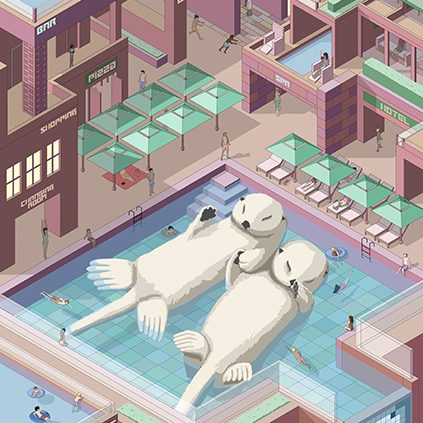

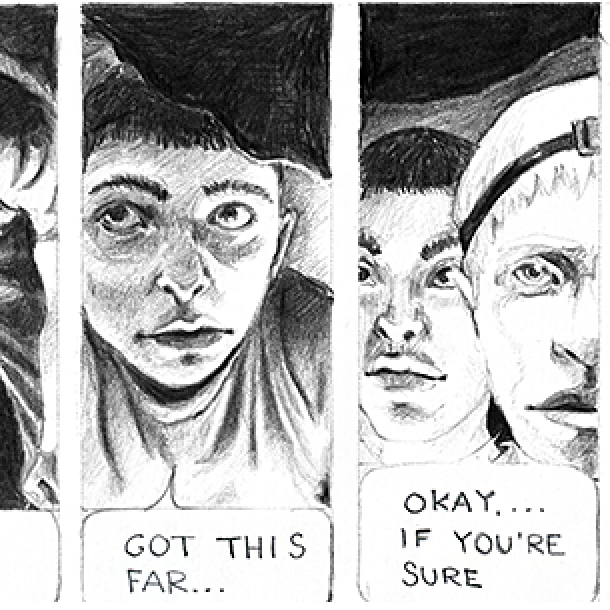
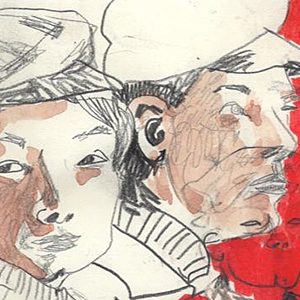
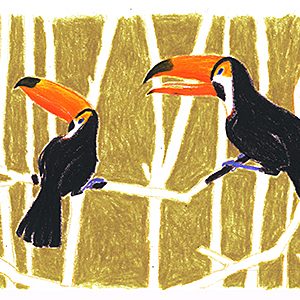
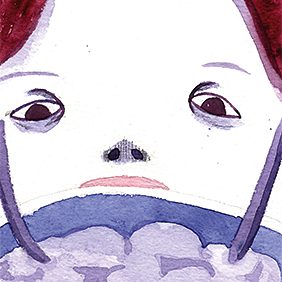
Learn from our Experts
Here you will find further valuable information about our professors and their career.

